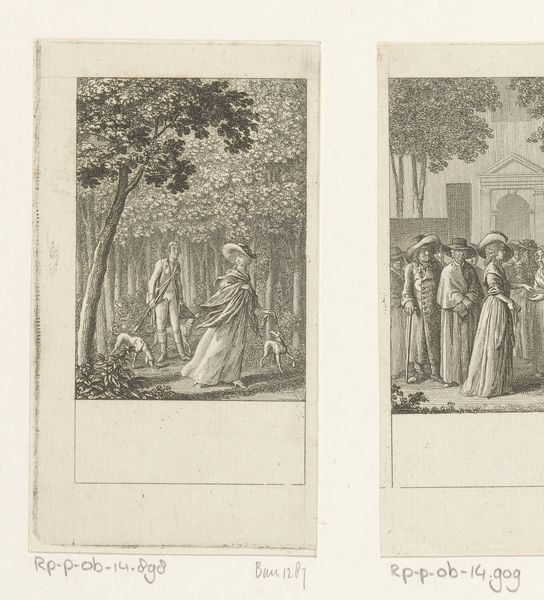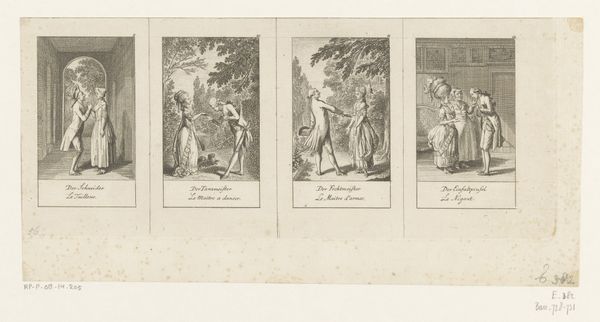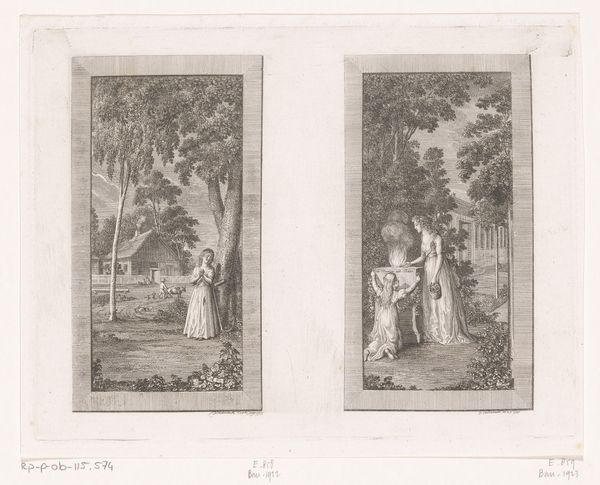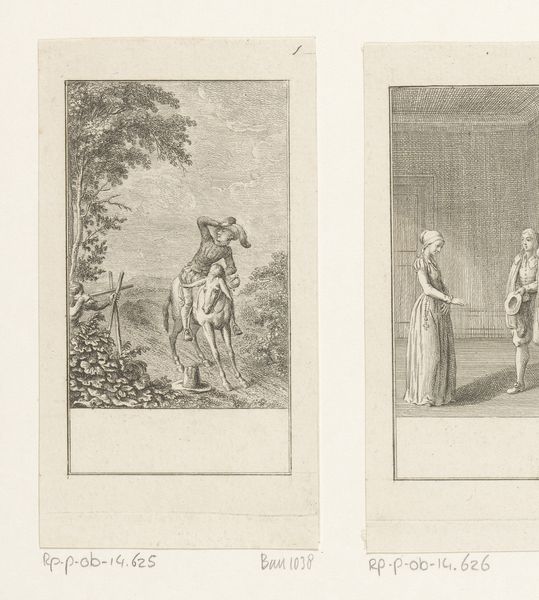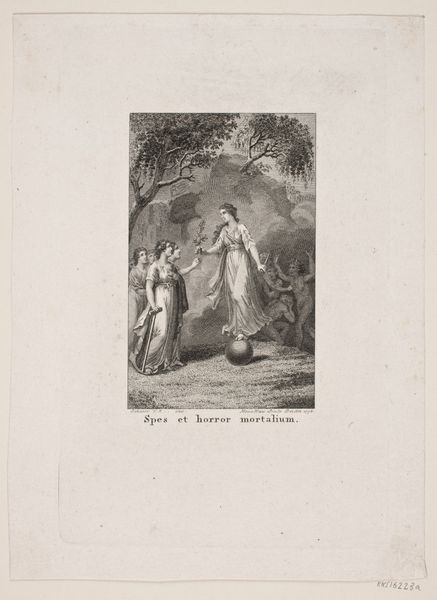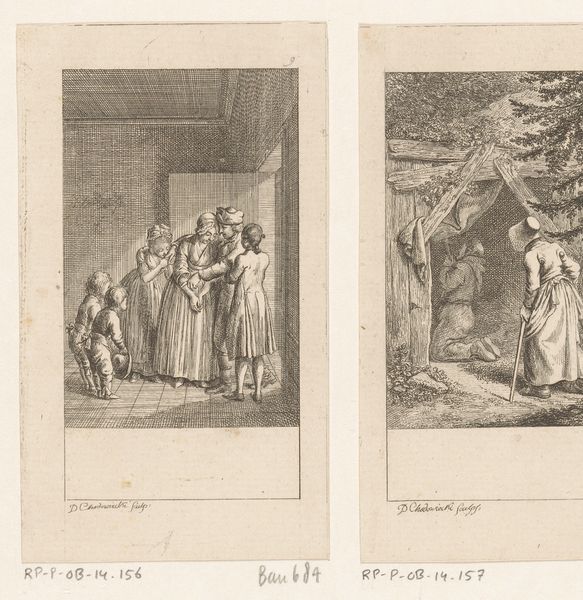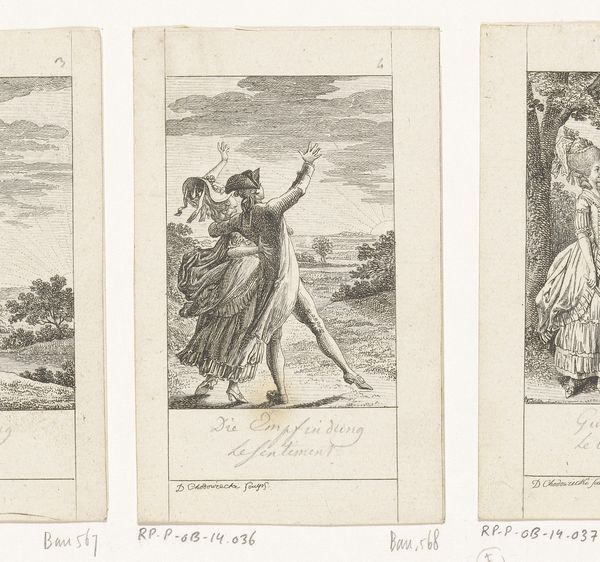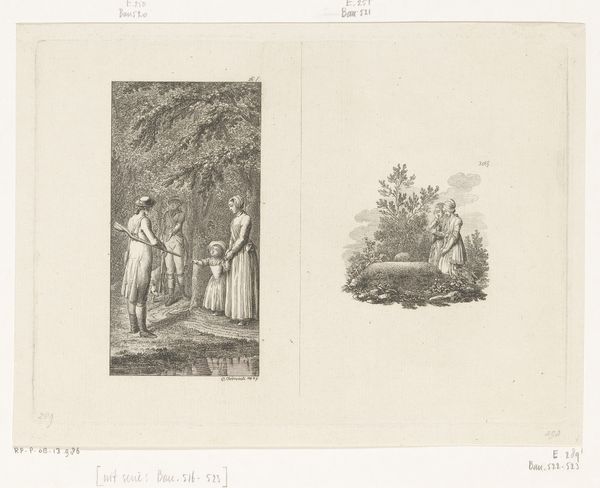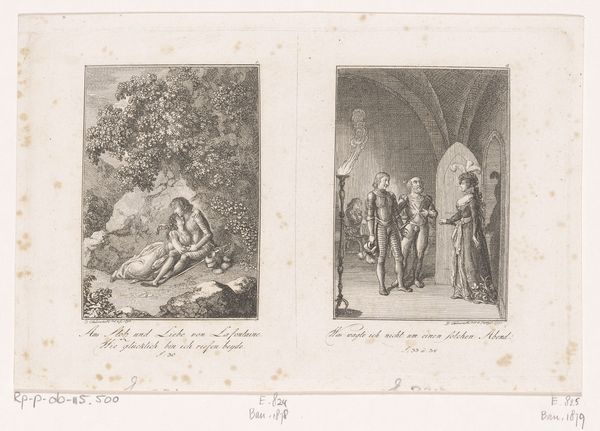
print, etching, engraving
#
narrative-art
# print
#
etching
#
etching
#
history-painting
#
engraving
Dimensions: height 118 mm, width 417 mm
Copyright: Rijks Museum: Open Domain
Curator: Editor: This is "Zes voorstellingen uit Shakespeare's De Storm," a series of engravings made in 1787 by Daniel Nikolaus Chodowiecki. I’m struck by how the artist manages to capture so many scenes in such small frames, almost like a comic strip. How do you interpret this work in terms of its historical and social context? Curator: It’s interesting you notice the sequential aspect. This piece offers a window into 18th-century interpretations of Shakespeare and, more broadly, the Enlightenment's fascination with reason and order. How does seeing these scenes presented linearly impact our understanding of the narrative? Consider the power dynamics represented – Prospero's control over Caliban and Ariel, for example. Editor: So, beyond just illustrating the play, Chodowiecki is making a statement about power? Is he supporting the social structure of the play? Curator: Not necessarily supporting it, but perhaps reflecting on it, making it available for discussion and debate. Think about the context: The late 18th century was on the cusp of revolutionary change, with challenges to traditional authority growing louder. The Enlightenment valued rational thought. Chodowiecki presents Shakespeare’s exploration of hierarchy through his engraving. How might his intended audience have reacted? Did they view it as commentary on colonialism through the enslavement of Caliban, or as a testament to rightful social order? Editor: That's a different way to think about it. I originally thought it was a simple retelling, but now I see it as more of a mirror held up to society’s views on power and maybe the justification for some terrible actions. Curator: Precisely. Art is not created in a vacuum. It’s interwoven with social commentary, challenging our understanding. Editor: Thank you. This has given me a deeper appreciation for the power of historical context in interpreting art.
Comments
No comments
Be the first to comment and join the conversation on the ultimate creative platform.


